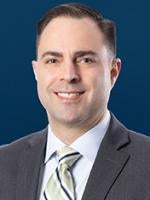Eagerly anticipated comprehensive retirement plan legislation commonly known as the "SECURE 2.0 Act" was signed into law on December 30, 2022, as part of the Consolidated Appropriations Act of 2023. The changes made by the SECURE 2.0 Act are just as sweeping as the original SECURE Act (i.e., the Setting Every Community Up for Retirement Enhancement Act of 2019), if not more so. As was the case with its predecessor, the vast majority of the provisions in SECURE 2.0 are seen as a win for participants and the industry as a whole. However, these benefits will come at the cost of many new plan design, document, and administration challenges for plan sponsors in 2023 and beyond.
The legislation contains nearly 100 provisions that will significantly change the retirement plan landscape. While this alert is not intended as a comprehensive summary, we do wish to highlight the following key provisions:
-
Most new 401(k) and 403(b) plans must provide for automatic enrollment, and generally must be structured as an EACA. These plans must allow permissible withdrawals within 90 days of the first elective contribution. In general, the initial default deferral rate for a participant's first year of participation must be at least 3% (and no more than 10%), with required automatic escalation of 1% in each subsequent year, up to a maximum of at least 10% (and no more than 15%). If the participant does not make an affirmative investment election, these automatically contributed funds must be invested in a QDIA. Of course, a participant may affirmatively elect a different percentage or decline to participate altogether.
-
The age for required minimum distributions is further increased (from the prior increase recently provided under the original SECURE Act) to age 73 starting on January 1, 2023, and age 75 starting on January 1, 2033 (depending upon the participant's date of birth).
-
Catch-up contribution limits are increased for individuals aged 60-63 to the greater of $10,000 or 150% of the regular catch-up amount. Other catch-up-eligible participants will remain subject to the standard limits. However, all catch-up contributions for participants whose prior year income exceeds $145,000 (as indexed) must be made on a Roth basis.
-
The Act includes two new emergency savings provisions: First, it provides an exception to the 10% early distribution penalty for certain limited distributions up to $1,000 used for emergency expenses. Second, it permits individual account plans to offer emergency savings accounts linked to the plan. The value of the account attributable to the employee's contributions will be limited to $2,500.
-
The Act includes several provisions designed to encourage employers to implement new retirement plans, including enhanced start-up incentives and two new simplified plan designs, known as a "starter 401(k) deferral-only arrangement" and a "safe harbor 403(b) plan."
-
The rules implemented under the original SECURE Act which require coverage of certain long-term, part-time (LTPT) employees under 401(k) plans have been modified to reduce the service requirement for such LTPT employees from three years to two years. However, the Act also provides a helpful clarification that years of vesting are not credited to LTPT participants for periods prior to the effective date of the original SECURE Act rule. (The IRS had previously taken the position that such years are required to be counted.) Finally, the Act extends these LTPT rules to ERISA 403(b) plans.
-
The excise tax for missed required minimum distributions is reduced from 50% to 25%. If the failure is corrected in a timely manner, the excise tax is further reduced to 10%.
-
The Act contains several provisions aimed at enhancing a plan's ability to correct mistakes, including expanded access to self-correction under the Employee Plans Compliance Resolution System (EPCRS), and certain relief from and guardrails on the recoupment of overpayments to participants.
-
The Act attempts to relieve some administrative burdens relating to participant notices by authorizing the combination of certain notices and by reducing the notice requirements for employees who choose not to participate. However, the Act does require certain notices to be provided in hard copy, unless the participant opts for electronic versions.
-
Plans may permit participants to elect to receive employer matching contributions or employer nonelective contributions on a Roth basis.
-
403(b) plans may participate in multiple employer plans (including pooled employer plans), with relief from the so-called "one bad apple rule."
-
A plan may provide that student loan repayments will be treated as elective deferrals for purposes of the plan's matching contributions.
-
An employer may provide additional de minimis financial incentives (such as low-dollar gift cards) to employees to encourage participation in the plan, provided that they are not paid for with plan assets.
-
403(b) plans may invest in group trusts.
-
The involuntary cash-out threshold is raised from $5,000 to $7,000.
-
Under the proper circumstances, an employer may rely upon a participant's self-certification that he or she is eligible for a hardship distribution.
-
Plans may permit distributions to victims of domestic abuse up to an amount equal to the lesser of $10,000 or 50% of the participant's account balance. These distributions are exempt from the 10% tax on premature distributions and may be repaid within three years.
-
The 10% early distribution tax is also eliminated for participants with a terminal illness.
The above-referenced changes merely scratch the surface of this extensive Act. Significant regulatory guidance is still needed, and plan document amendments are generally not due until 2025. However, many SECURE 2.0 Act provisions are effective immediately, and plan sponsors must ensure that their plans comply with these new requirements in operation.






 />i
/>i

